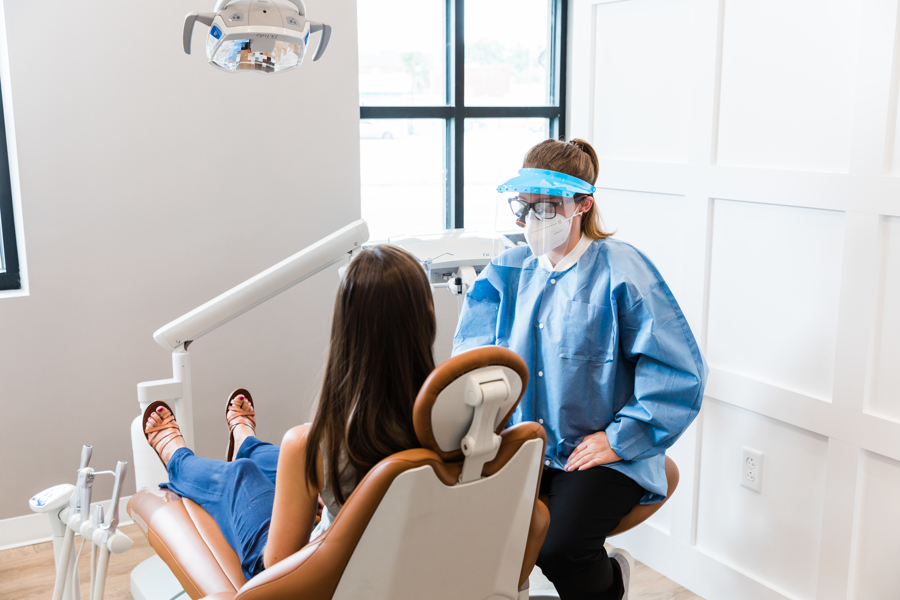Check Out the Array of Dental Issues Dentists Frequently Handle
From the widespread problem of tooth cavities triggered by bacterial activity to the more insidious development of gum tissue condition, oral specialists must be proficient at early detection and intervention. Tooth level of sensitivity, frequently resulting from worn enamel, adds another layer of complexity, while the early identification of oral cancer can be life-saving.
Dental Caries and Dental Cavity
While keeping ideal dental hygiene is crucial, dental caries and tooth degeneration continue to be common problems that dentists regularly resolve. Dental caries, likewise referred to as cavities, are brought on by the demineralization of tooth enamel due to acid-producing microorganisms in the mouth. These microorganisms prosper on sugars and starches from food and beverages, developing a cycle of acid attacks that slowly deteriorate the enamel and dentin layers of teeth. If left neglected, cavities can bring about substantial oral issues, consisting of infections and tooth loss.
To detect cavities and tooth degeneration, dental practitioners utilize a mix of visual assessments, oral X-rays, and in some cases laser fluorescence devices. For more innovative degeneration, a dental professional might require to get rid of the jeopardized cells and recover the tooth with fillings made from materials such as composite resin, amalgam, or porcelain.
Safety nets are paramount in combating tooth cavities and dental caries. Normal oral check-ups, proper cleaning and flossing strategies, and a well balanced diet low in sugary foods and drinks are fundamental techniques that sustain dental wellness and minimize the risk of cavities.
Gum Disease

Periodontitis takes place when plaque, a sticky film of germs, sets into tartar and collects below the gum line. This triggers the gum tissues to pull away from the teeth, producing pockets that come to be infected. As the body's immune system deals with the germs, the bone and connective cells that hold teeth in place are broken down. The danger factors for gum disease consist of poor oral health, smoking, diabetic issues, and hereditary tendency.
Dentists diagnose periodontal illness with medical examination and periodontal probing to measure pocket depths around the teeth. Treatment may include scaling and origin planing to eliminate tartar and microorganisms from tooth surface areas and under the gum tissues. In extreme situations, surgical treatments like flap surgical procedure or bone grafts are essential to recover oral wellness. Keeping proper oral hygiene and regular oral exams are essential for avoiding periodontal disease.

Tooth Sensitivity
Beyond periodontal condition, an additional usual oral concern that people regularly encounter is tooth level of sensitivity. Characterized by a sharp, transient pain in response to stimulations such as warm, cool, pleasant, or acidic foods and beverages, tooth sensitivity can dramatically influence a person's high quality of life.
Furthermore, dental treatments, broken teeth, and gum condition can subject the dentin. To minimize tooth level of sensitivity, dental experts may recommend using tooth paste formulated for delicate teeth, fluoride treatments to strengthen enamel, or oral bonding to cover revealed dentin.
Ultimately, attending to tooth sensitivity needs an extensive approach that includes both precautionary measures and targeted therapies to ease discomfort and shield the dental frameworks.
Oral Cancer Cells
Dental cancer, a significant and potentially serious problem, commonly flies under the radar in regular dental treatment conversations. This sort of cancer can influence any component of the dental cavity, including the lips, tongue, cheeks, flooring of the mouth, soft and difficult tastes, sinuses, and throat. Early detection is vital for effective treatment, yet numerous instances are detected at advanced phases as a result of refined initial signs.
Misaligned Bites
Misaligned bites, likewise called malocclusions, are a common oral problem that can significantly impact both oral wellness and overall high quality of life - dentists eugene. These conditions happen when the top and reduced teeth do not align correctly, bring about troubles in biting, eating, and even speaking. Malocclusions can be categorized right into numerous kinds, consisting of overbites, underbites, crossbites, and open attacks, each presenting special difficulties that call for tailored treatment methods
The sources of misaligned bites are diverse and can include genetic aspects, very early loss of baby teeth, thumb sucking, and injuries to the jaw. Signs and symptoms often include pain or discomfort in the jaw, regular attacking of the internal cheeks, and a boosted danger of tooth degeneration and periodontal illness because of problem in keeping dental health.
Orthodontists and dentists use an array of treatments to attend to misaligned bites, from clear aligners and conventional braces to advanced surgeries in severe instances. Early medical diagnosis and treatment are important to stop problems such as temporomandibular joint (TMJ) disorders and uncommon wear on teeth. Through anchor detailed assessment and customized therapy strategies, dental specialists play an essential function in correcting malocclusions and enhancing patients' oral feature and appearances.
Verdict
Dental experts click to find out more address a range of oral problems, each with distinct obstacles and treatment methods. Tooth cavities and dental cavity arise from microbial activity that endangers tooth enamel, while periodontal condition can intensify from gingivitis to extreme periodontal problems. Tooth sensitivity includes pain from thermal stimuli, requiring specific treatment. Early discovery of oral cancer cells is essential for reliable intervention. Misaligned attacks effect both dental wellness and quality of life, typically calling for orthodontic or medical solutions to fix.
To identify dental caries and tooth decay, dental practitioners employ a combination of visual exams, oral X-rays, and sometimes laser fluorescence tools.Beyond periodontal illness, an additional usual dental issue that clients often run into is tooth sensitivity. In addition, oral treatments, cracked teeth, and gum disease can expose the dentin. To reduce tooth sensitivity, dental practitioners may recommend using toothpaste formulated for sensitive teeth, fluoride treatments to strengthen enamel, or dental bonding to cover subjected dentin. Dental caries and tooth degeneration result from microbial task that jeopardizes tooth enamel, while periodontal about his illness can escalate from gingivitis to severe periodontal problems.